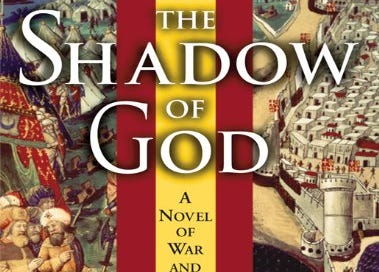The Knights Hospitallers in Rhodes
Exploring their story and the 1522 siege through historical fiction
Last week, my husband and I went on our honeymoon to Rhodes, Greece. But it wasn’t just the baklava, sparkling blue seas or ancient history that called us. We chose this small island off the coast of Turkey for its medieval history.
The Knights Hospitaller
The Order of the Knights of the Hospital of Saint John of Jerusalem, later known as the Knights Hospitallers, ruled Rhodes for over 200 years. Their role was initially religious and was to provide medical care to pilgrims and knights going to the Holy Land. But in the 1120s-30s, it took on a more militaristic role, accepting knights into the order. They took part in the Crusades and the Siege of Acre in 1291.
After fleeing to Cyprus after the events of 1291, they wanted to establish their own foothold and set their sights on Rhodes, an island just off Turkey. Four years later, it was theirs. They reinforced the fortifications and built the Palace of the Grand Master, which still stands today.
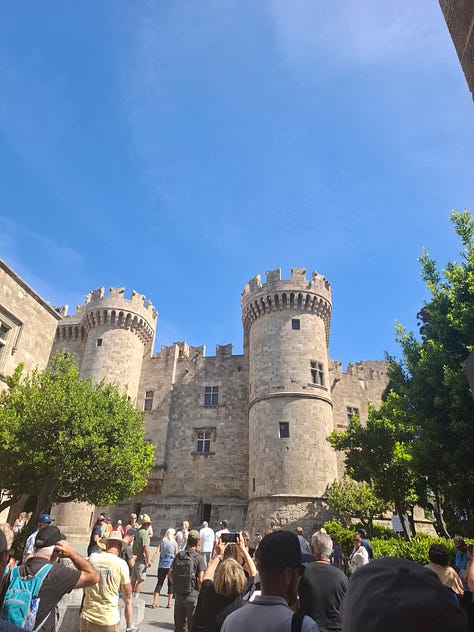
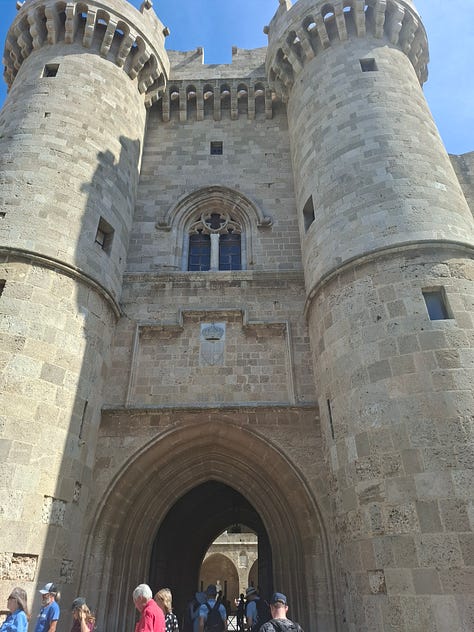
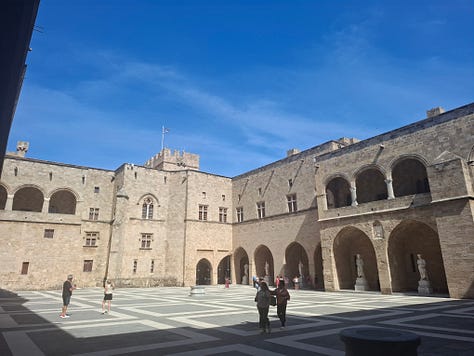
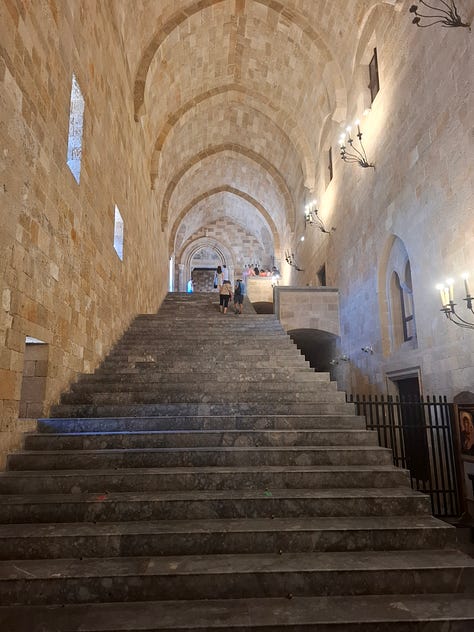
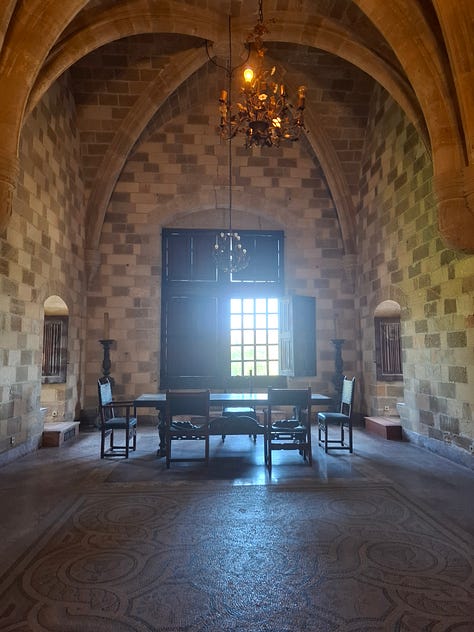
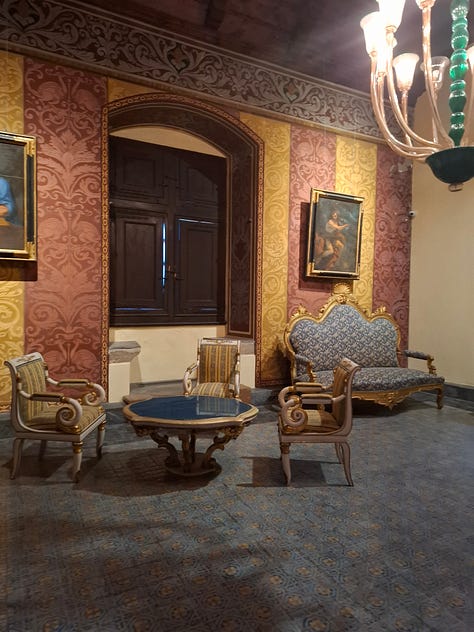
The Street of the Knights in Rhodes is a medieval cobblestone street leading up to the palace. It has seven inns, known as “langues” (tongues), which housed the different nations of the Knights Hospitaller. These included France, Italy, Provence, Auvergne, Aragon, England and Germany. These were where these knights resided, socialised and gathered. You can still see coats of arms engraved above the doorways.
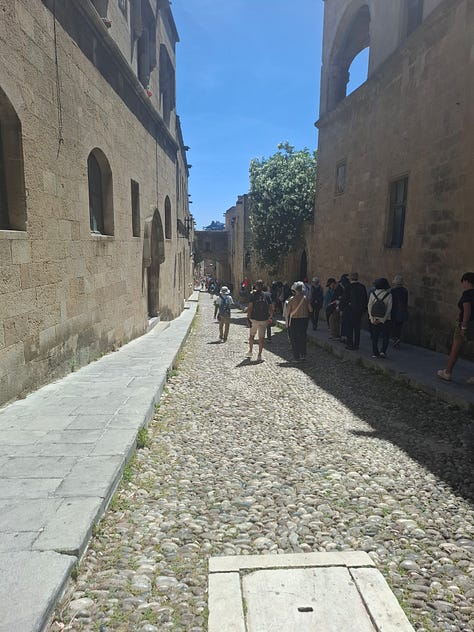
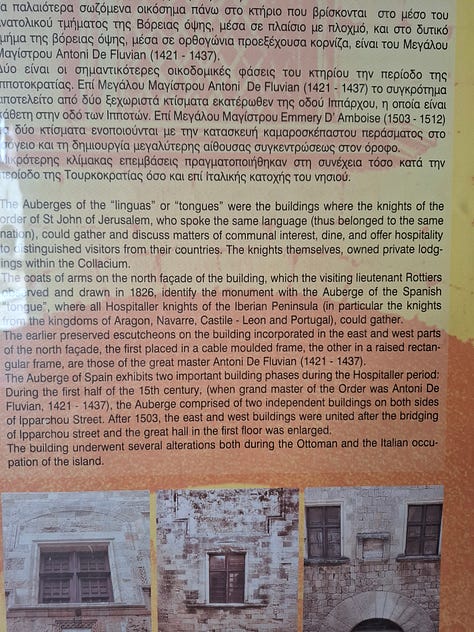
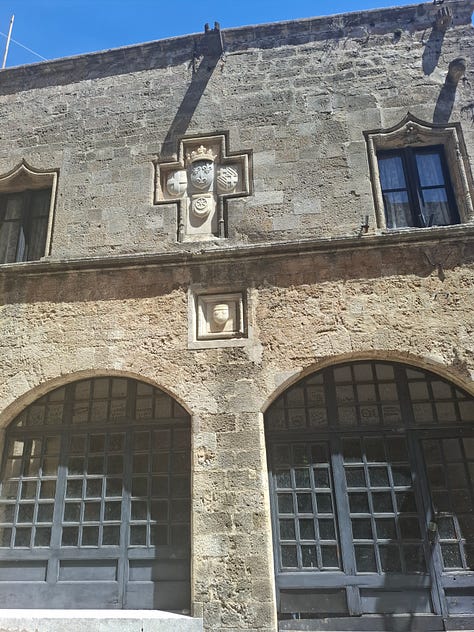
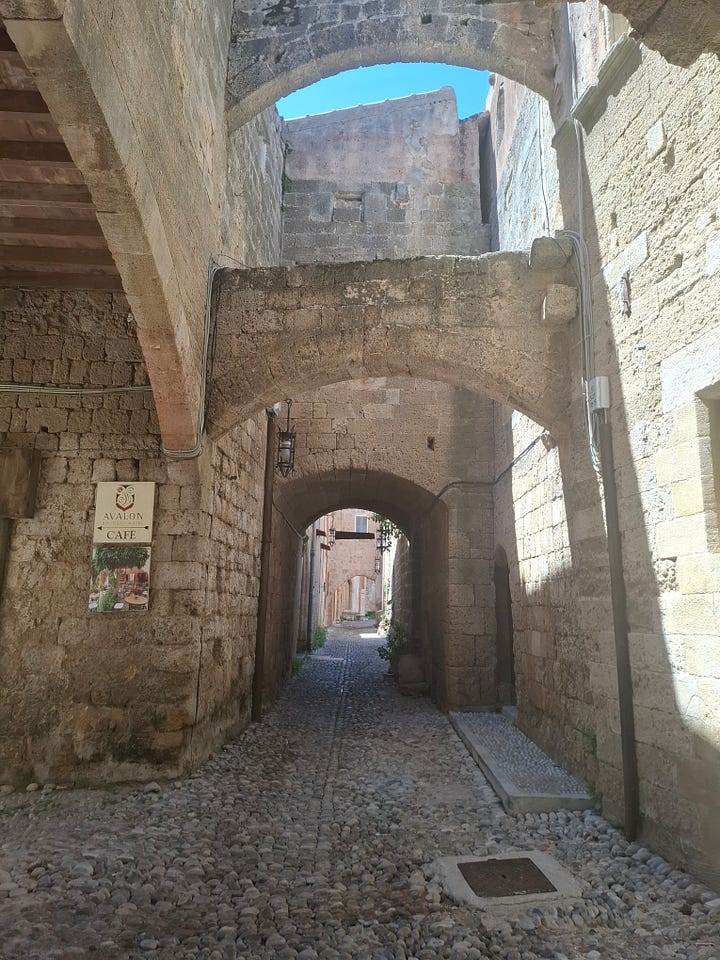

Alongside naval conflicts against Barbary pirates and the Ottomans (they were known for their naval prowess), they faced two sieges launched by the Ottoman Empire. One was in 1480, which they won, and one in 1522 that led them to leave the island to settle in Malta.
Today, the Sovereign Military Order of Malta (SMOM) continues their work in caring for the poor and suffering and providing global humanitarian aid.
The Archaeological Museum of Rhodes
The Archaeological Museum of Rhodes is housed in the former Great Hospital of the Knights Hospitaller. The museum displays a wide selection of burial finds, Classical and Hellenistic sculptures and mosaic floors.
But in a huge hall that was once the Great Ward, with sunlight streaming through high windows, there are stone engravings of coats of arms and the tomb slabs of knights and grand masters. Next to each is a plaque with their name and nationality. This was one of the highlights for me, remembering some of the knights who lived and died within this medieval town.
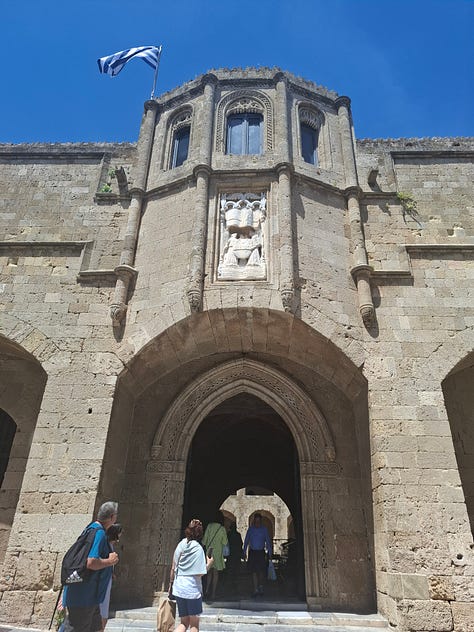
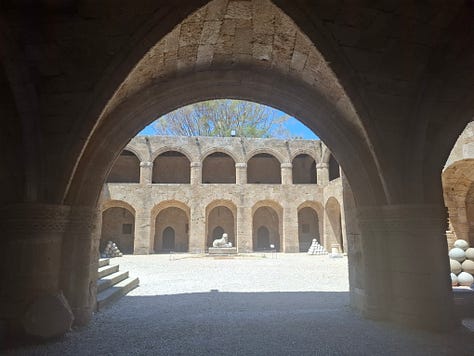
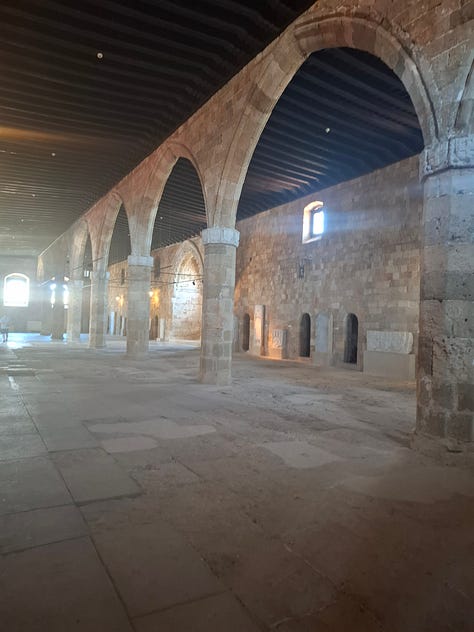
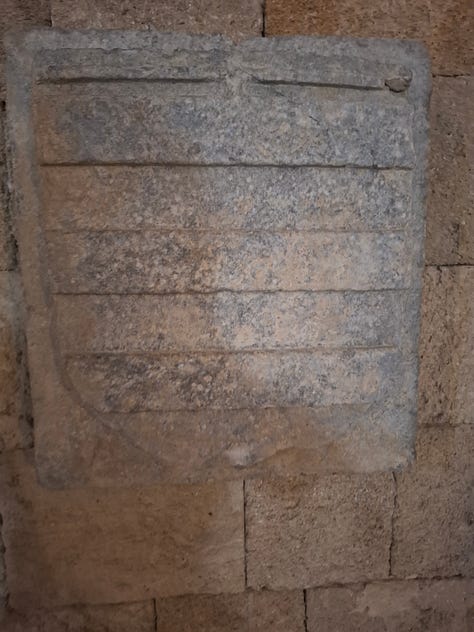
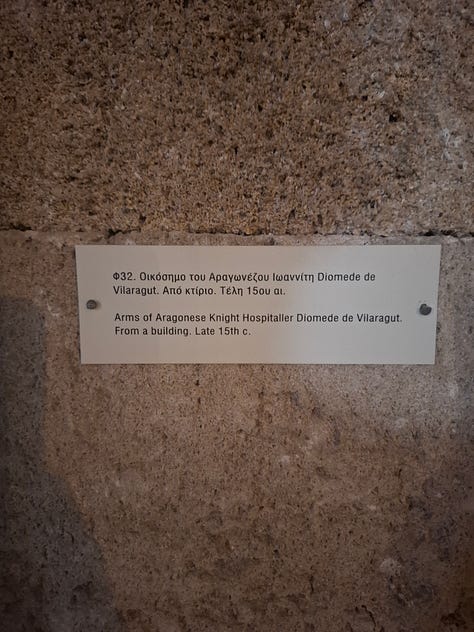
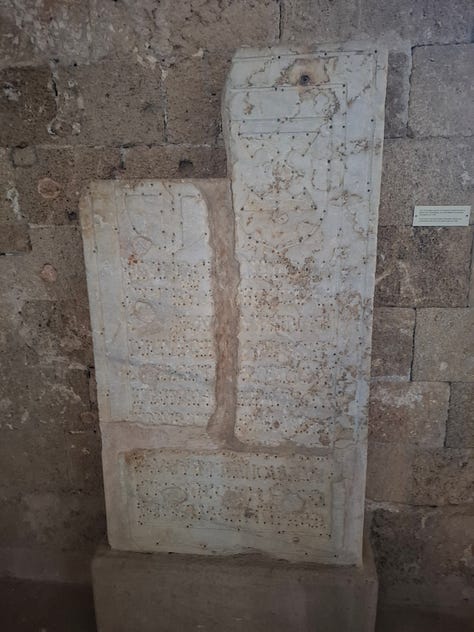
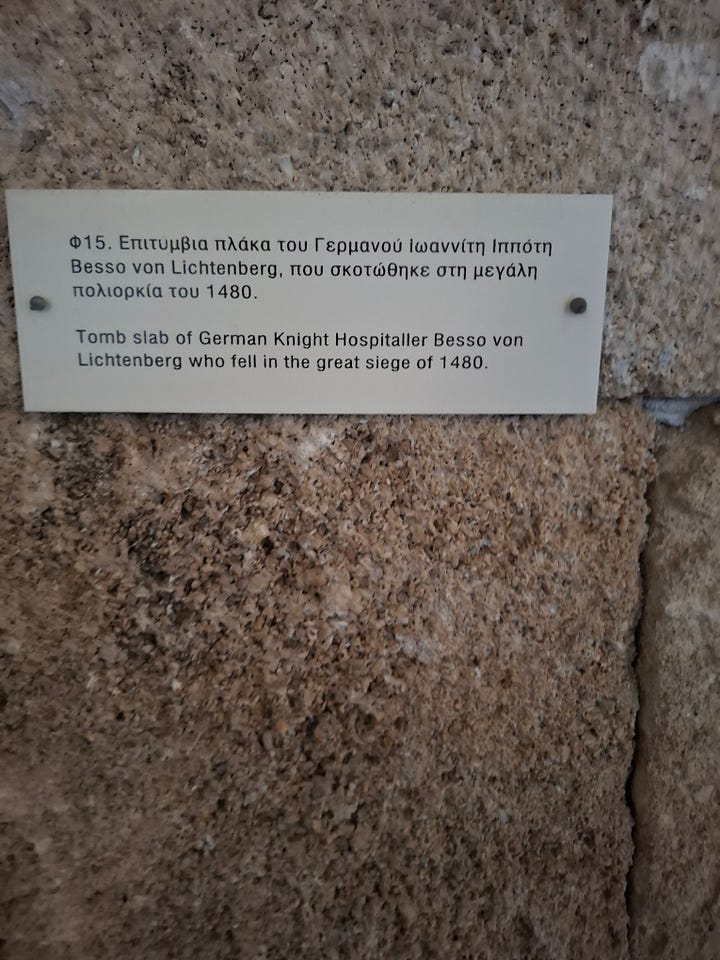
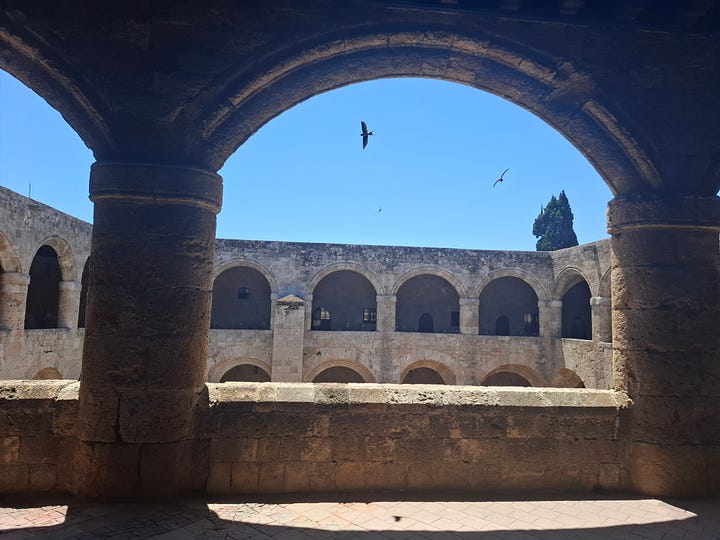
The 1522 Siege
In June 1522, Sultan Suleiman the Magnificent arrived in Rhodes to end the 200-year rule of the Knights Hospitallers. The Ottoman Empire had previously attacked in 1480 but had been defeated. Suleiman was determined to regain control of the eastern Mediterranean.
With a force of around 300 ships and about 75,000 troops, they outnumbered the knights significantly. Their approach was to blockade the harbour and use cannon bombardments and mines to bring down the impregnable town walls. They breached the walls on a few occasions but were pushed back with ferocious counter-attacks.
The siege lasted around six months. As the conditions within the town worsened for civilians and fighters, Grand Master Philippe Villiers de L’Isle-Adam eventually surrendered the city in December, 1522.
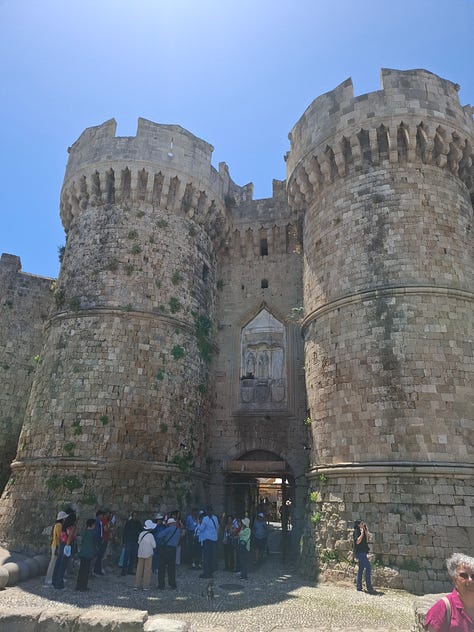
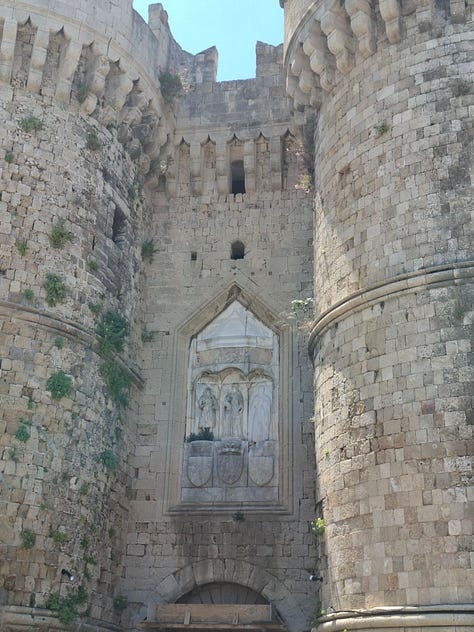

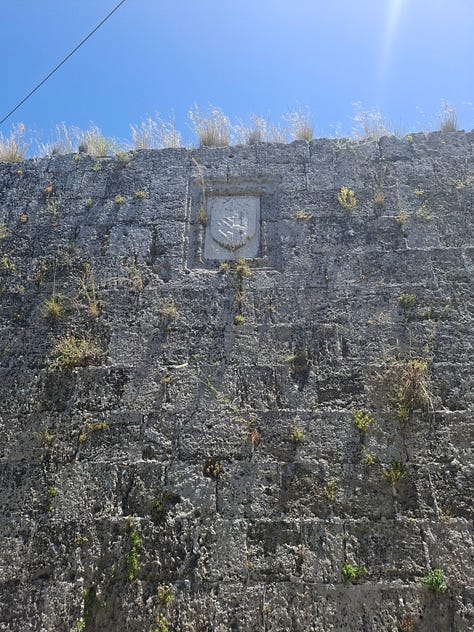
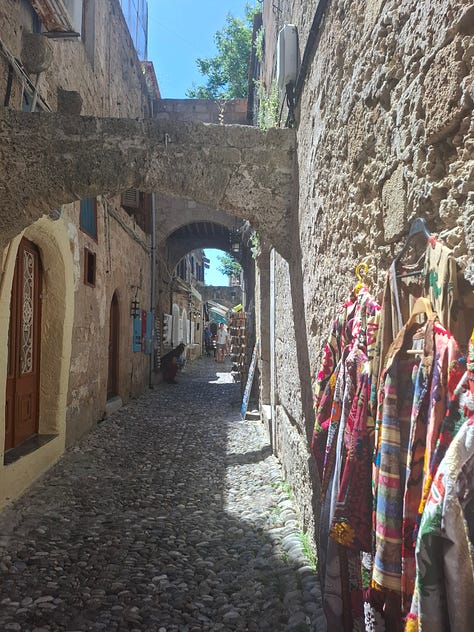
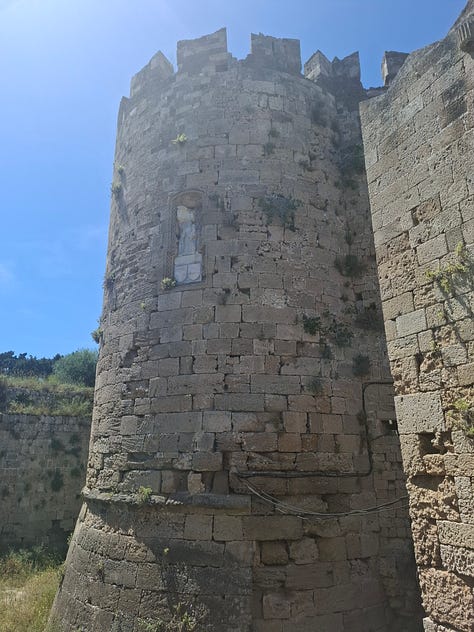
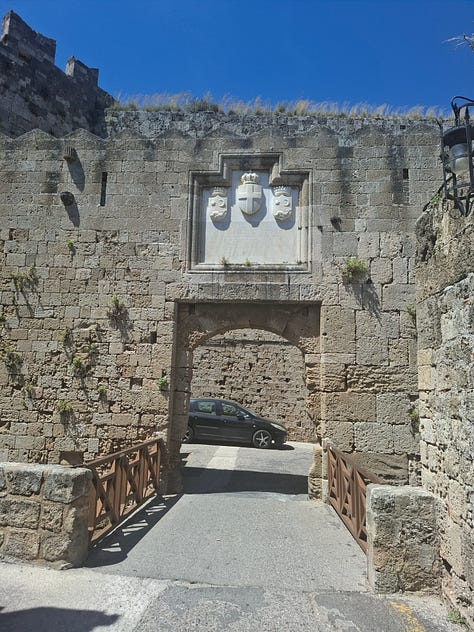
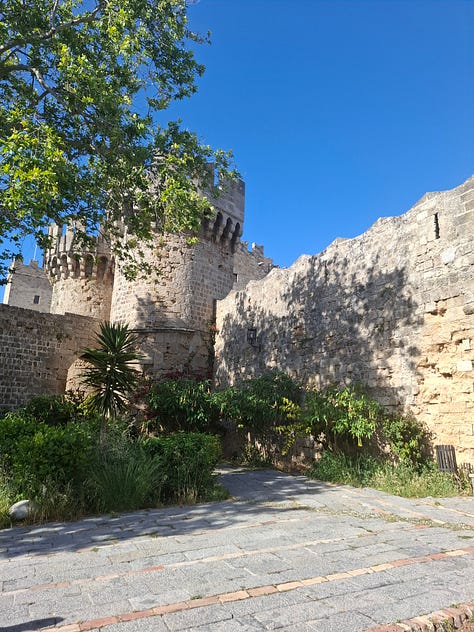
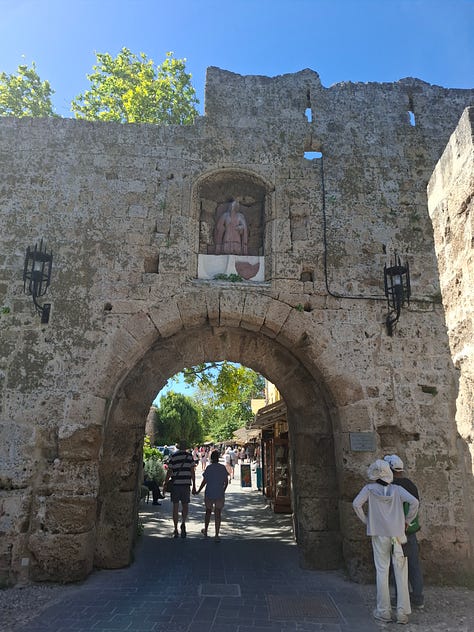
Books on Location: The Shadow of God by Antony A Goodman
A sweeping historical saga, The Shadow of God vividly re-creates the 1522 siege of Rhodes, where Suleiman the Magnificent’s vast Ottoman army clashed with 500 knights defending their fortified city. Amidst this epic battle of siege warfare, the novel weaves tales of forbidden love and unwavering courage, bringing to life a brutal yet honourable forgotten era.
Shadow of God recounts the events of the dramatic and brutal siege through multiple voices. One voice is that of the 25-year-old Sultan Suleiman the Magnificent and his Ottoman army of janissaries, commanders and slaves. From their culture, ambitions and strategy, we see the conflict through his eyes. On the opposing side is Grand Master Philippe de L’Isle and his outnumbered band of Knights Hospitallers. Trapped within their walls, we see the siege from the point of view of the defenders and life within a besieged town. Alongside their stories, Goodman also offers stories from the women these men love, the friends who surround them, and the citizens and slaves caught up in the conflict. The effect is a well-rounded and balanced viewpoint of the siege.
Goodman captures the scale of the conflict with meticulous attention to detail, starting with Suleiman’s ascension to the throne in Turkey. He also focuses on the tactics and weaponry both sides used against each other and the strategic decisions of both sides. The Ottoman armies relied heavily on the use of mining, explosives and cannon bombardments to breach the impenetrable walls of the town, and Goodman captures the danger and backbreaking effort this involved, down to the slaves and miners whose lives were forfeit. From the walls, the knights used their own cannon, arquebuses and crossbows, as well as power, strategy and intense discipline to repel the attacks:
“For the first time since landing on the accursed island, the Janissaries stared into the face of the devil. Before them were fifty knights in full armour. All wore identical battle cloaks of deep scarlet, emblazoned over the left chest with a white, eight-pointed cross. Each wore a cylindrical iron helmet, visor in place, with only a horizontal slit through which the Turks could see the unblinking eyes of the knights. Broadswords were drawn, held almost carelessly, as if the knights feared nothing of the Janissaries’ scimitars. Shoulder to shoulder they stood. A wall. Motionless. Immovable. Deadly.”
This is a story of war, religion and power. It is a story of determination, resilience and glory but also of despair, suffering and casualties during war and the devastating consequences for the soldiers, civilians and families of Rhodes and Turkey.
Goodman wrote this book because he was inspired after a visit to Rhodes. And having visited the medieval city where these events took place, I feel like he’s really captured the echoes of this historical event. This, and my own personal connection to Rhodes, has made Shadow of God one of my most enjoyable reads of the year so far.

